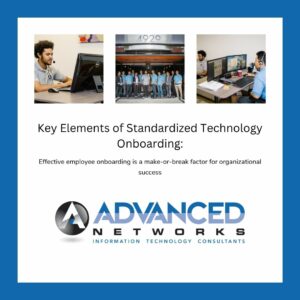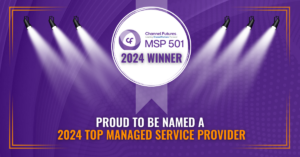 Seamless Onboarding: Elevating Employee Success with Standardized Technology Protocols
Seamless Onboarding: Elevating Employee Success with Standardized Technology Protocols
In the contemporary business landscape, where technological advancements occur at an unprecedented pace, effective employee onboarding is a make-or-break factor for organizational success. Recognizing this, many companies are embracing the idea of standardized technology protocols during the onboarding process. This blog post delves into the myriad advantages and essential components of incorporating standardized technology protocols to ensure a frictionless integration experience for new hires.
- Consistency and Efficiency: Inconsistencies during the onboarding process can lead to confusion and delays. Standardized technology onboarding ensures a uniform experience for all new hires, reducing the learning curve and fostering a sense of stability. This consistency, in turn, promotes efficiency as employees can quickly adapt to the established norms.
- Faster Integration: Time is of the essence in today’s competitive environment. Standardized technology onboarding expedites the integration of new hires into their roles. When employees are equipped with a standardized set of tools and protocols, they can seamlessly navigate their responsibilities, contributing to projects and tasks more rapidly.
- Cybersecurity Preparedness: With cyber threats becoming increasingly sophisticated, cybersecurity training is non-negotiable. Standardized technology onboarding ensures that every

- employee is well-versed in security best practices from day one. This early education is a proactive measure to fortify the organization against potential cybersecurity risks.
Key Elements of Standardized Technology Onboarding:
- Digital Training Modules: Develop interactive and engaging digital training modules covering the essential technology tools, software, and security protocols. These modules should be easily accessible, allowing employees to revisit and reinforce their knowledge at their own pace. Utilize multimedia elements, simulations, and quizzes to enhance engagement.
- Documentation and Resources: Comprehensive documentation and resources serve as a reference guide for employees. This includes easily understandable information on company policies, IT procedures, and troubleshooting guides. A well-organized and accessible knowledge base empowers employees to navigate technology challenges independently.
- Interactive Workshops: Complement digital modules with live and interactive workshops or webinars. These sessions provide new hires with an opportunity to interact with IT professionals, ask questions, and engage in hands-on activities. The collaborative nature of workshops fosters a supportive learning environment and builds a sense of community.
- Feedback Mechanism: Establish a feedback loop to continuously improve the onboarding process. Encourage new hires to provide insights on their technology training experience. This feedback can be invaluable in refining content, identifying areas for improvement, and ensuring that the onboarding process remains dynamic and responsive to evolving needs.
Standardized technology onboarding is more than a procedural checkbox; it is a strategic investment in the long-term success of both employees and the organization. By adopting a consistent and comprehensive approach to technology training, companies create a foundation for sustained growth, innovation, and resilience in an ever-evolving digital landscape.





